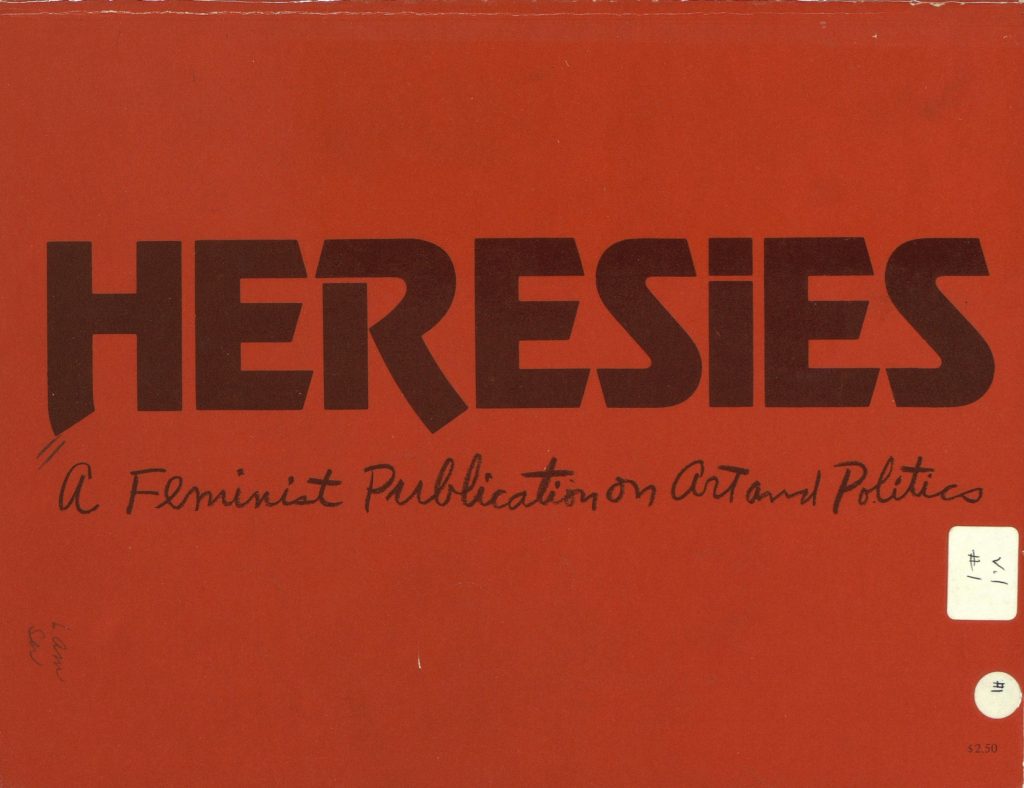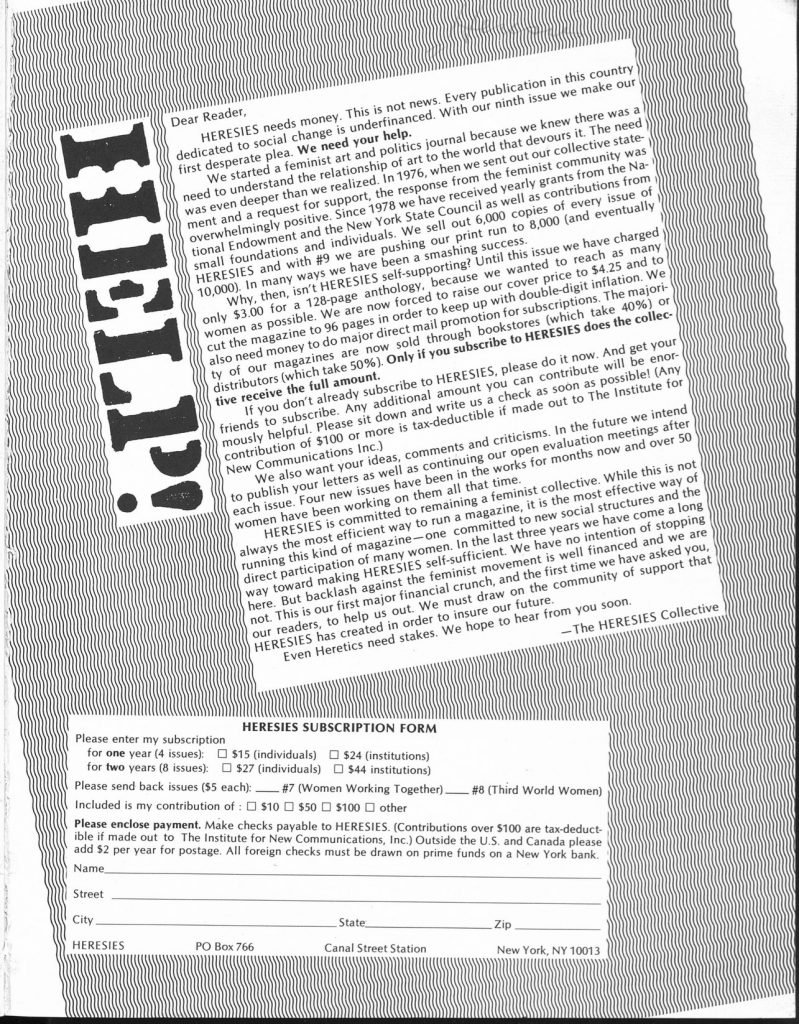In the late 1960’s through the mid 1970’s, women started a wave of small press feminist publications across the United States. Dedicated to radical ideas and very mission-driven, many of these periodicals tried to enact social change through publishing women’s literature and literary theory. However, the relatively small readership of these publications put them on financially unstable ground. Because of this, the economic recession of the late 1970’s hit small feminist presses particularly hard. In this period, the first pages of Quest, Conditions, Heresies, and other feminist publications came to be dominated by editorial statements asking their readers to help them stay afloat by subscribing and paying higher cover prices. These letters from the editors (and often accompanying reader responses) expanded on the practices of community-building and transparency that already characterized the feminist press.

Cover of Heresies’ Inaugural Issue, 1976
Started in 1976, Heresies was a relative latecomer to Second Wave periodicals, but it came into the world fully formed. In the first issue, the original collective of twenty-one women outlined how each issue would bring together a new editorial group of several volunteers to curate content under a specific theme. Certain hallmarks of the magazine, like the mission statement, would remain unchanged issue to issue, giving Heresies a sense of continuity, but this large, non-hierarchical rotating staff of volunteer editors would keep the magazine from relying too much on any one woman. Even the core collective that chose themes and made long-term decisions for the magazine was flexible; between issues 1 and 2, it acquired three new members, and by 1980, nine women were full members of the collective, while another eighteen were associate members (Heresies vol. 1, no. 1; vol. 1, no. 2; vol. 3, no. 1). The core collective and rotating editorial groups kept themselves accountable both by accepting letters from readers and holding open evaluation meetings after each issue was released to gather feedback. The location, date, and time of these meetings would be published in the magazine itself. In this way, the many editors of Heresies built a relationship with their readers from the beginning.

Note from the Editorial Collective, 1980
Heresies’ relationship with its readers was crucial when in 1980, the magazine found itself in a financial crisis. In the first pages of issue 9, the Heresies collective published a note declaring in boldface letters, “HELP!” (Heresies vol. 3, no. 1). In it they explained, “Every publication in this country dedicated to social change is underfinanced,” and they were no exception despite selling out of their 6000 copy printing runs every issue and receiving annual grants from the New York State Council and the National Endowment for the Arts. Starting with issue 9, they would be pushing their print run to 8000, raising their price per issue from $3.00 to $4.25, and lowering their page count from 128 pages to 96 while imploring readers to subscribe to avoid the 40% and 50% cuts that bookstores and distributors took. By taking all of these actions simultaneously, Heresies seemed to be able to right itself before getting too far off course and emerge from this period without too much trouble, as they did not publish another similar note in the next five years (HERESIES issues 9-18).
It is worth asking why and how Heresies managed to navigate the gauntlet of the late 70’s and early 80’s relatively unscathed while other small magazines either folded or underwent transformations to stay afloat. Did their unique editorial structure make a difference? Were they able to build a supportive community of readers in a way other magazines could not? Were their larger printing runs the major difference maker? Or was it the government grants? It’s impossible to know without taking an in-depth look at Heresies’ peers during the same time.
Sources:
“Introduction: The Movement that Changed a Nation” The American Women’s Movement, 1945-2000. 33-43.
Heresies: A Feminist Publications of Art & Politics. vol . 1, issue 1, Heresies Collective, 1976.
Heresies: A Feminist Publications of Art & Politics. vol . 1, issue 2, Heresies Collective, 1976.
Heresies: A Feminist Publications of Art & Politics. vol . 3, issue 1, Heresies Collective, 1980.
